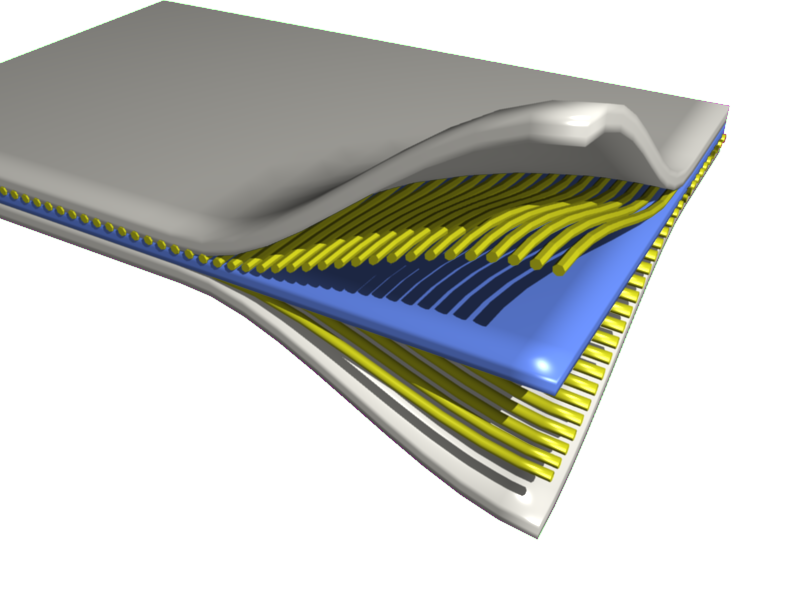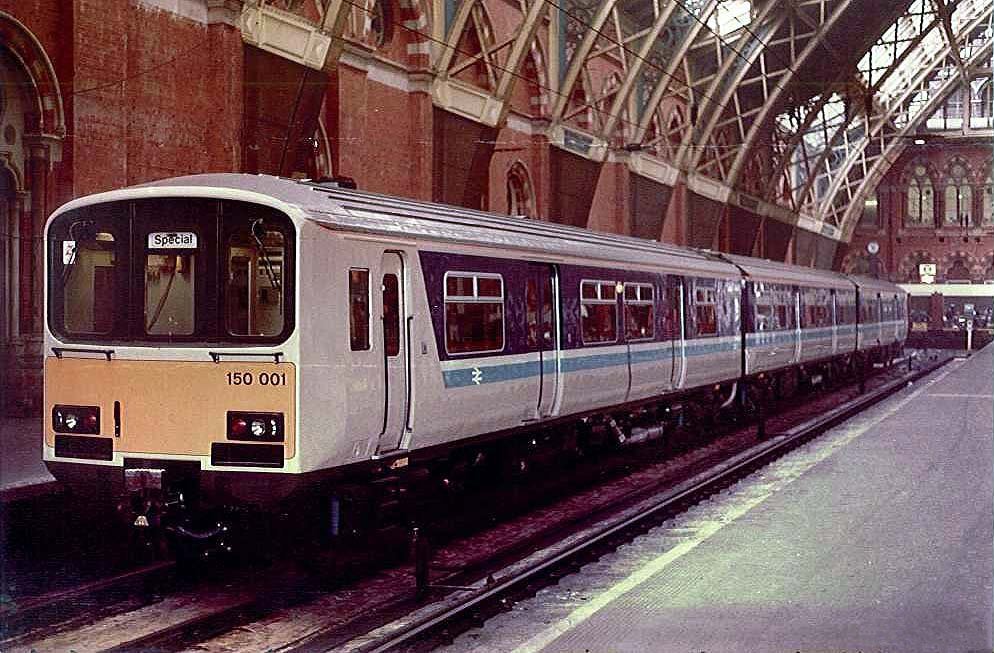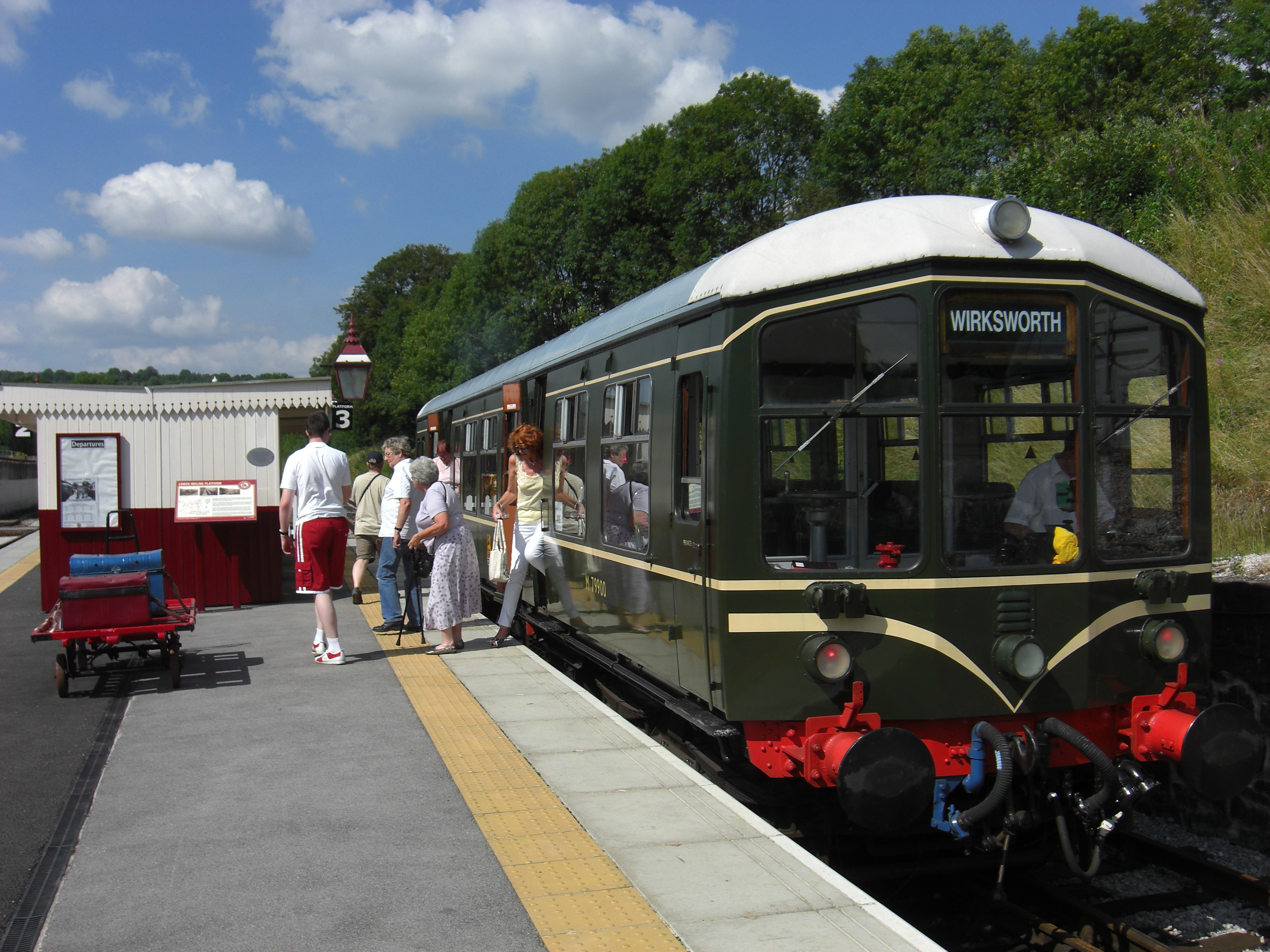|
British Rail Class 141
The British Rail Class 141 is the first production model of the Pacer (British Rail), ''Pacer'' diesel multiple unit (DMU) railbus. During the 1980s, British Rail (BR) was interested in replacing its first generation diesel multiple units, particularly in the use of railbuses to service its lightly used branch lines. It was decided to develop such a vehicle with a high level of commonality with the widely used Leyland National bus, leading to its modular design serving as the basis for the design. Several single and two-car prototypes were constructed and evaluated, before an order was placed with British Leyland for 20 two-car Class 141 units during 1984. During their operating lives, the units were tasked with various passenger services across the UK for 13 years. Following withdrawal, a large proportion of the units were exported to Iran where they operated for a further eight years, giving the Class 141 a total lifespan of 21 years. Background By the beginning of the 1980s, ... [...More Info...] [...Related Items...] OR: [Wikipedia] [Google] [Baidu] |
Pontefract Tanshelf
Pontefract Tanshelf railway station is the most central station in the market town of Pontefract in West Yorkshire, England, and serves Pontefract Racecourse, Pontefract Races, the racecourse located just down the street from the station. It lies on the Pontefract Line operated by Northern (train operating company), Northern and is east of Wakefield Kirkgate railway station, Wakefield Kirkgate. In the days of coal mining in the Pontefract area, the station served the needs of the local workforce with regular and frequent services timed for the beginning and the end of mining shifts. The station is the closest to the former Prince of Wales Colliery which closed in August 2002. The station serves Beechnut Lane, the home ground of Pontefract Collieries F.C. The first station on the site was opened on 17 July 1871 as ''Tanshelf'', being renamed ''Pontefract Tanshelf'' on 1 December 1936. It was closed on 2 January 1967, when the passenger services were diverted away from the di ... [...More Info...] [...Related Items...] OR: [Wikipedia] [Google] [Baidu] |
Tightlock Coupling
Type H Tightlock couplers are a variety of Janney coupler, typically used on North American mainline passenger rail cars. They have mechanical features that reduce slack in normal operation and prevent telescoping in derailments, yet remain compatible with other Janney types used by North American freight railroads. Like all Janney couplers, the Tightlock is "semi-automatic". The couplers automatically lock when cars are pushed together, but workers must go between cars to hook up the air lines for the pneumatic brakes and connect cables for head-end power and other communications. To separate cars, a worker must use a lever to move the locking pin that keeps the coupler closed. In Europe, some operators experimented with making fully automatic tightlock couplers by adding integral pneumatic and electric connectors, but these connections proved unreliable, and most have switched to the more common fully automatic Scharfenberg coupler. Janney Type H Tightlock coupler stand ... [...More Info...] [...Related Items...] OR: [Wikipedia] [Google] [Baidu] |
Composite Material
A composite or composite material (also composition material) is a material which is produced from two or more constituent materials. These constituent materials have notably dissimilar chemical or physical properties and are merged to create a material with properties unlike the individual elements. Within the finished structure, the individual elements remain separate and distinct, distinguishing composites from mixtures and solid solutions. Composite materials with more than one distinct layer are called ''composite laminates''. Typical engineered composite materials are made up of a binding agent forming the ''matrix'' and a Filler (materials), filler material (particulates or fibres) giving ''substance'', e.g.: * Concrete, reinforced concrete and masonry with cement, lime or Mortar (masonry), mortar (which is itself a composite material) as a binder * Composite wood such as glulam and plywood with wood glue as a binder * Reinforced plastics, such as fiberglass and fibre-rein ... [...More Info...] [...Related Items...] OR: [Wikipedia] [Google] [Baidu] |
Track Circuit
A track circuit is an electrical device used to prove the absence of a train on a block of rail tracks to control railway signals. An alternative to track circuits are axle counters. Principles and operation The basic principle behind the track circuit lies in the connection of the two rails by the wheels and axle of locomotives and rolling stock to short an electrical circuit. This circuit is monitored by electrical equipment to detect the absence of the trains. Since this is a safety appliance, fail-safe operation is crucial. Hence the circuit is designed to indicate the presence of a train when failures occur. On the other hand, false occupancy readings are disruptive to railway operations and must be minimized. Track circuits allow railway signalling systems to operate semi-automatically, by displaying signals for trains to slow or stop in the presence of occupied track ahead of them. They help prevent dispatchers and operators from causing accidents, both by informin ... [...More Info...] [...Related Items...] OR: [Wikipedia] [Google] [Baidu] |
British Rail Class 140
The British Rail Class 140 was the prototype of the ''Pacer'' diesel multiple unit. It was constructed between 1979 and 1981 in response to a desire within British Rail to develop a capable railbus for its smaller branch line services. Much of the bodywork was constructed using Leyland National bus components, with the exception of the cabs. Based on the single car railbus prototypes, the Class 140 was built to BR's then stringent regulations regarding crashworthiness and resistance to end loading; as such, much of its intention lightweight 'bus on a wagon' look was lost, becoming a more substantial vehicle. Throughout the 1980s, the sole member of the class functioned as a trials and demonstration unit, acting as a herald to the closely related Class 141. Since its withdrawal, the unit has been preserved at the Keith and Dufftown Railway. Background By the beginning of the 1980s, British Rail (BR) operated a large fleet of first generation DMUs, which had been construct ... [...More Info...] [...Related Items...] OR: [Wikipedia] [Google] [Baidu] |
British Rail Sprinter
The Sprinter is a family of diesel multiple unit trains in use on the Rail transport in Great Britain, British railway system. They were built in the 1980s and early-1990s by British Rail Engineering Limited (BREL), Metro-Cammell and British Leyland, Leyland. Sprinters operate in almost every part of Great Britain, from rural branch lines to commuter expresses into major cities. The class includes British Rail Class 150, class 150, British Rail Class 151, 151, British Rail Class 153, 153, 154, British Rail Class 155, 155, British Rail Class 156, 156, British Rail Class 158, 158 and British Rail Class 159, 159. Most have Cummins UK, Cummins engines with Voith hydraulic transmissions, although 47 Class 158 units have Perkins Engines, Perkins engines instead. Originally British Rail coined the "Sprinter" name for the units, mainly to promote the superior acceleration capabilities of the units compared with the first-generation DMUs they replaced. Advertisements such as "The Spri ... [...More Info...] [...Related Items...] OR: [Wikipedia] [Google] [Baidu] |
British Rail Class 150
The British Rail Class 150 '' Sprinter'' is a class of diesel-hydraulic multiple unit passenger trains, developed and built by British Rail Engineering Limited at York Carriage Works between 1984 and 1987 for use on regional services across Great Britain. The type is a second-generation design, built to more modern standards and based on BR's Mark 3 body design for longer-distance services. It was developed alongside the lower-cost Pacers, which were built using bus parts, for use on short-distance services. Two prototype units were built, followed by 135 production units in two batches. Subsequently, further members of the Sprinter family were developed and introduced to service, including the Class 155, Class 156, Class 158 and Class 159. Background By the beginning of the 1980s, British Rail (BR) was operating a large fleet of first-generation DMUs of various designs. While formulating its long-term strategy for this sector of its operations, BR planners recognised ... [...More Info...] [...Related Items...] OR: [Wikipedia] [Google] [Baidu] |
Asbestos
Asbestos ( ) is a group of naturally occurring, Toxicity, toxic, carcinogenic and fibrous silicate minerals. There are six types, all of which are composed of long and thin fibrous Crystal habit, crystals, each fibre (particulate with length substantially greater than width) being composed of many microscopic "fibrils" that can be released into the atmosphere by Abrasion (mechanical), abrasion and other processes. Inhalation of asbestos fibres can lead to various dangerous lung conditions, including mesothelioma, asbestosis, and lung cancer. As a result of these health effects, asbestos is considered a serious Health hazard, health and safety hazard. Archaeological studies have found evidence of asbestos being used as far back as the Stone Age to strengthen ceramic pots, but large-scale mining began at the end of the 19th century when manufacturers and builders began using asbestos for its desirable physical properties. Asbestos is an excellent Thermal insulation, thermal and In ... [...More Info...] [...Related Items...] OR: [Wikipedia] [Google] [Baidu] |
List Of British Rail Diesel Multiple Unit Classes
This is a list of British Rail diesel multiple-unit train classes. For a historical overview of diesel multiple unit train development in Great Britain, see British railcars and diesel multiple units. Pre-nationalisation designs * GWR railcars * LMS railcars First generation Early BR DMUs (79xxx series) TOPS classes Second generation Lightweight railcars Pacers Sprinters Turbos Networker Turbostar Coradias Desiro Civity Diesel-electric multiple units (DEMUs) Southern Region DEMUs Second Generation Voyager-style express DEMUs High-speed trains See also * List of British Rail classes * List of British Rail modern traction locomotive classes * List of British Rail electric multiple unit classes * British Rail locomotive and multiple unit numbering and classification * British Rail coach type codes References External links * {{British Rail DMU British Rail diesel multiple units, List British railway-related lists, British Rail diesel multipl ... [...More Info...] [...Related Items...] OR: [Wikipedia] [Google] [Baidu] |
Iran
Iran, officially the Islamic Republic of Iran (IRI) and also known as Persia, is a country in West Asia. It borders Iraq to the west, Turkey, Azerbaijan, and Armenia to the northwest, the Caspian Sea to the north, Turkmenistan to the northeast, Afghanistan to the east, Pakistan to the southeast, and the Gulf of Oman and the Persian Gulf to the south. With a Ethnicities in Iran, multi-ethnic population of over 92 million in an area of , Iran ranks 17th globally in both List of countries and dependencies by area, geographic size and List of countries and dependencies by population, population. It is the List of Asian countries by area, sixth-largest country entirely in Asia and one of the world's List of mountains in Iran, most mountainous countries. Officially an Islamic republic, Iran is divided into Regions of Iran, five regions with Provinces of Iran, 31 provinces. Tehran is the nation's Capital city, capital, List of cities in Iran by province, largest city and financial ... [...More Info...] [...Related Items...] OR: [Wikipedia] [Google] [Baidu] |
Leyland National
The Leyland National is an integrally constructed British step-floor single-decker bus manufactured in large quantities between 1972 and 1985. It was developed as a joint project between two UK nationalised industries – the National Bus Company and British Leyland. Buses were constructed at a specially built factory at the Lillyhall Industrial Estate, Workington. Styling was carried out by the Italian vehicle stylist Giovanni Michelotti, previously commissioned by both Triumph (Herald, TR4, GT6, 2000/2500, 1300, Dolomite and Stag) and Scammell lorries (Routeman GRP cab). It was intended to replace all the rear-engined single-decker buses offered by British Leyland, including the AEC Swift, Bristol RE, single-deck Daimler Fleetline, Daimler Roadliner and Leyland Panther. Design The Leyland National was built with integral, modular construction and a rear engine. All components were designed for ease of construction and replacement. Until 1978, it was always ... [...More Info...] [...Related Items...] OR: [Wikipedia] [Google] [Baidu] |
Railbus
A railbus is a lightweight passenger railcar with an automotive engine. It shares many aspects of its construction with a bus, typically having a bus (original or modified) body and four wheels (2 axles) on a fixed base instead of on bogies. Originally designed and developed during the 1930s, railbuses have evolved into larger dimensions with characteristics similar in appearance to a light railcar, with the terms ''railcar'' and ''railbus'' often used interchangeably. Railbuses designed for use specifically on little-used railway lines were commonly employed in countries such as Germany, Italy, France, the United Kingdom, and Sweden. Today, railbuses are being replaced by modern, light Railcar#New-generation DMU and EMU railcars, DMU railcar designs. Modern diesel-electric railcars, which can be run coupled as multiple units, like the Stadler RS1, the RegioSprinter of Siemens, or the successor Siemens Desiro, share the role and specifications with railbuses (albeit with improv ... [...More Info...] [...Related Items...] OR: [Wikipedia] [Google] [Baidu] |











